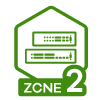Switch Flow Control
 Zyxel Employee
Zyxel Employee



Switch Flow Control
Introduction to Switch Port Flow Control
Switch port flow control is a critical feature for managing network congestion and ensuring smooth data transmission across the network. This article provides a comprehensive overview of switch port flow control, its benefits, and how to enable it on Zyxel switches.
Understanding Packet Buffers
Every switch has a hardware buffer, also known as a packet buffer. This buffer temporarily stores traffic during congestion to prevent packet loss. The size of the packet buffer varies by switch model. For example, the XGS 2220 has a packet buffer size of 2 megabytes.
Causes of Congestion
Network congestion can occur due to two main reasons:
- High to Low Link Transmission: When a device connected to a high-speed (e.g., 10 Gbps) link sends data to a device on a lower-speed (e.g., 1 Gbps) link, the higher volume of traffic cannot be processed at the same rate by the lower-speed link, causing congestion.
- Multiple Links to a Single Link: When multiple high-speed links send data to a single lower-speed link, the combined traffic can exceed the capacity of the single link, leading to congestion.
Ethernet Flow Control (IEEE 802.3X)
Ethernet flow control allows switches to send and process pause frames to manage traffic and prevent packet loss. When the packet buffer reaches a certain threshold, the switch sends a pause frame to the sending device to temporarily halt data transmission.
Key Concepts:
- Pause Frame Threshold: The buffer level at which the switch triggers the transmission of pause frames.
- TX Pause Frames: Sent by the switch to ports with flow control enabled to stop data transmission when the buffer reaches the threshold.
- RX Pause Frames: Received by the switch from other devices, causing it to temporarily stop data transmission on the ports with flow control enabled.
Benefits of Flow Control
The primary benefit of flow control is to prevent packet loss during periods of congestion. While it introduces a small amount of latency, this is generally preferable to the higher latency and retransmission overhead caused by packet loss.
Enabling Flow Control
To enable flow control on a Zyxel switch:
- Access the Switch Port Settings: Navigate to the switch's configuration page and select the port you want to configure.
- Enable Flow Control: Toggle the flow control option to enable sending and receiving pause frames.
- Filter by Flow Control Setting: Use the filter option to view and manage the flow control settings of each port.
Best Practices for Flow Control
While flow control can prevent packet loss, it should not be enabled on all ports indiscriminately. Consider the following best practices:
- Target Specific Ports: Enable flow control on ports connected to servers or critical devices where congestion is likely to occur.
- Avoid Enabling on Core Links: Do not enable flow control on links that are central to your network's operation, as this can introduce latency that affects multiple devices.
Conclusion
Flow control is a valuable tool for managing network congestion and ensuring efficient data transmission. By understanding how it works and implementing it strategically, you can improve the performance and reliability of your network.
Categories
- All Categories
- 441 Beta Program
- 2.9K Nebula
- 208 Nebula Ideas
- 127 Nebula Status and Incidents
- 6.4K Security
- 533 USG FLEX H Series
- 334 Security Ideas
- 1.7K Switch
- 84 Switch Ideas
- 1.3K Wireless
- 51 Wireless Ideas
- 6.9K Consumer Product
- 295 Service & License
- 461 News and Release
- 90 Security Advisories
- 31 Education Center
- 10 [Campaign] Zyxel Network Detective
- 4.7K FAQ
- 34 Documents
- 86 About Community
- 99 Security Highlight